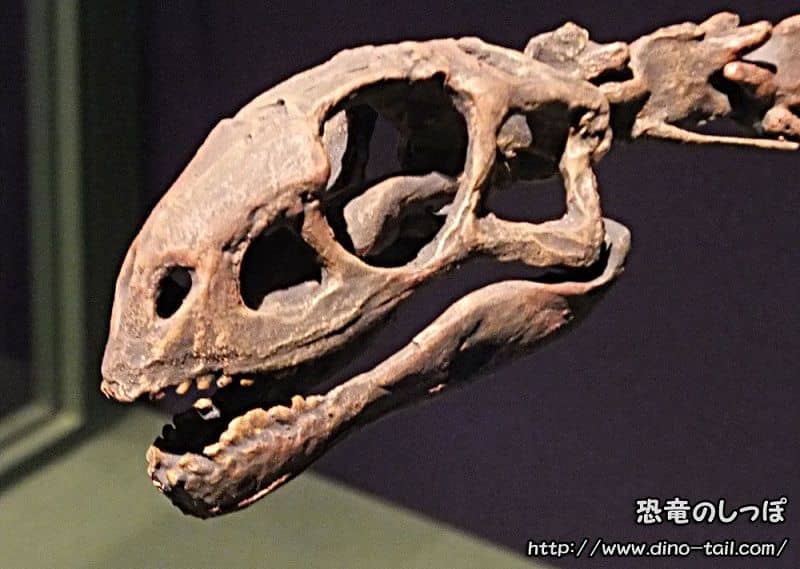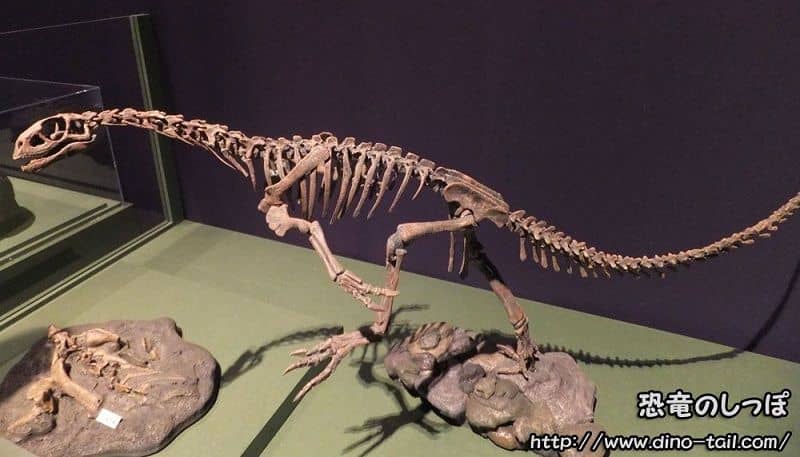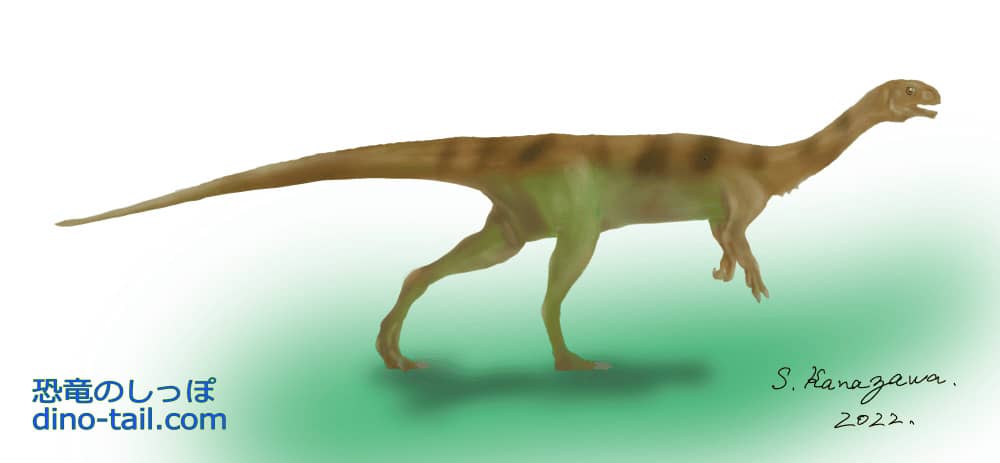About Chilesaurus
| Scientific Name (Genus) | Chilesaurus |
| Meaning of Name | Chile lizard |
| Classification | Saurischia, Theropoda (Tetanurae) |
| Total Length | Approx. 3m |
| Diet | Herbivorous |
| Period | Late Jurassic (approx. 145 million years ago) |
| Species | Chilesaurus diegosarezi |
| Year of Paper Publication | 2015 |
| Genus Name Publication | Novas, F. E.; Salgado, L.; Suárez, M.; Agnolín, F. L.; Ezcurra, M. N. D.; Chimento, N. S. R.; de la Cruz, R.; Isasi, M. P. et al. (2015). An enigmatic plant-eating theropod from the Late Jurassic period of Chile. Nature, 522. |
Characteristics

The teeth are flat, suitable for chewing plants.
Fossils discovered in a Late Jurassic formation in southern Chile in 2004 were initially reported as belonging to several different types of dinosaurs. It was later realized they all belonged to a single strange species, which was named Chilesaurus and described in a paper in 2015.
This dinosaur challenges the image of theropods as carnivores or omnivores. Despite belonging to the theropod group, which includes all carnivorous dinosaurs, Chilesaurus is believed to have been herbivorous.
The teeth of Chilesaurus are leaf-shaped, a characteristic of plant-eaters. Its pubis bone points slightly backward compared to other theropods, which is thought to be an adaptation for a larger digestive system needed to process large amounts of plant matter.
A Bizarre Dinosaur

"What makes it so bizarre?"
Its pelvis has features of ornithischians like Stegosaurus and Triceratops, and its broad, four-toed hind feet resemble those of early sauropodomorphs.
Its hind legs and cervical vertebrae show characteristics of theropods, the group that includes Tyrannosaurus and Spinosaurus.
Because Chilesaurus combines features from multiple dinosaur groups, the research team has compared it to a platypus (a mammal with a duck's bill, a beaver's tail, and an otter's feet).
A Discovery That Shakes the Dinosaur Evolutionary Tree

The biggest reason the discovery of Chilesaurus shocked the world is that its bizarre physical characteristics held the potential to rewrite the history of dinosaur evolution.
A study published in 2017, after a detailed analysis of the Chilesaurus skeleton, proposed a theory that it might be close to the earliest common ancestor of the two major dinosaur groups, 'Saurischia' (including theropods and sauropodomorphs) and 'Ornithischia' (including Stegosaurus and Triceratops), or perhaps even a primitive ornithischian itself.
Classification Still Debated: This theory sparked a major debate, and many researchers still consider Chilesaurus a theropod, so a conclusion has not yet been reached. However, it is a fact that this dinosaur possesses features of both theropods and ornithischians, making it an incredibly important 'key' to understanding how dinosaurs evolved into such a diverse array of forms.
